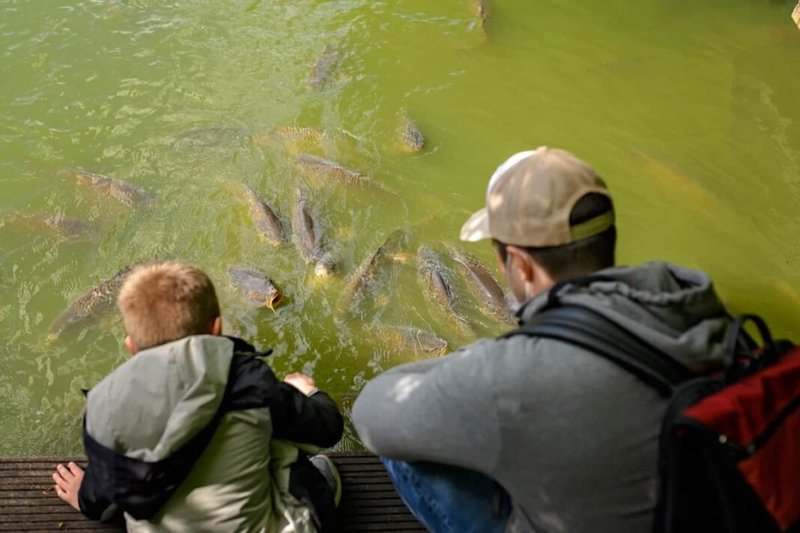
So, if you’re curious about the profitability of carp farming, you’re in the right place! Let’s break down what it costs to get started, what you might expect in return, and everything in between. Whether you’re dreaming of a new side hustle or thinking of going all in, I’m here to explain how carp farming works and what you might want to consider before diving in.
Understanding Carp Farming Basics
Carp farming is the practice of raising carp fish in controlled environments, which can be ponds, tanks, or cages. Carp are a popular choice because they grow quickly and can thrive in a variety of conditions. You might be wondering how this all works. Well, it’s quite similar to farming other livestock. You’ll need to provide proper nutrition, manage water quality, and ensure the fish remain healthy. This is where the fun—and the challenge—begins!
There are different types of carp to consider, such as common carp, grass carp, and koi. Each type has its unique requirements and market demand. For example, koi are often prized for their beauty and can fetch a high price, while common carp are mostly farmed for food. So, choosing the right type can impact your success and profitability significantly.
Knowing the basic concepts is just the tip of the iceberg. How much does it actually cost to start a carp farm? And what kind of returns can you expect? Let’s dig into that next.
Start-Up Costs for Carp Farming
The initial expenses for starting a carp farm can add up quickly, but they’re essential for laying the groundwork for success. Here are some key areas where you’ll need to invest:
- Land and Water Resources: You’ll need a suitable piece of land with access to clean water. Depending on your location, this could range from a few thousand dollars for a small pond to considerably more for larger areas.
- Equipment: To keep your fish healthy, you’ll need equipment like water pumps, aerators, and feeding systems. This equipment can cost anywhere from a couple hundred to several thousand dollars, depending on what you choose.
- Fish Stock: Buying young fish, or fry, is another upfront expense. Prices can vary, but expect to spend anywhere from $0.50 to $2 per fish, depending on the species and size.
As you can see, the costs can vary widely based on your setup and goals. It’s crucial to create a budget before diving in. Sometimes, you might even need to consider additional costs, like permits or licenses—especially if you want to sell your fish commercially.
Ongoing Operational Costs
Once you’ve set up your carp farm, the expenses don’t stop there. You’ll need to consider ongoing operational costs that can affect your profitability over time. Here are some to keep on your radar:
- Feed: Feeding your carp is a major ongoing expense. High-quality fish feed can cost $400 to $600 per ton. On average, you can expect to spend about 30-40% of your total production costs on feed.
- Water Management: Keeping the right water conditions is vital for fish health. This can involve costs for testing kits, filtration systems, and treatments, potentially adding up to a few hundred dollars each year.
- Labor: If your farm grows, you may need help. Pay for extra hands can be one of your largest expenses, so it’s something to factor into your calculations.
Understanding these costs can help you paint a clear picture of what to expect financially. Keeping a close eye on your budget will prepare you for any surprises down the road.
Potential Revenue from Carp Farming
Now let’s talk about the fun part—how much money can you actually make? The revenue from selling carp can vary based on market demand, the type of carp you raise, and your farming methods. Here’s a rough idea of what you might expect:
- Market Prices: Common carp can sell for around $1 to $3 per pound, while koi can fetch prices ranging from $10 to over $100 each, depending on their size and color patterns.
- Harvest Sizes: A well-managed pond can yield anywhere from 1,000 to 3,000 pounds of fish per acre annually. This means that if you have a few acres, your potential revenue could be significant.
- Diversified Income: Besides selling directly for food, there are other markets, like ornamental fish sales, which can help boost your income.
Overall, if you manage your expenses wisely and pick the right niche, carp farming can indeed be profitable—but like any agricultural business, it requires hard work and dedication.
Calculating ROI (Return on Investment)
Calculating your return on investment (ROI) is crucial for understanding whether your carp farming venture is worth it. To calculate ROI, you’ll want to consider both your total income and expenses. Here’s a simplified way to think about it:
1. Determine Your Total Income: How much money did you make from selling your fish?
2. Calculate Total Costs: Add up all your startup and ongoing operational costs.
3. Use the ROI Formula: The basic formula is (Total Income – Total Costs) / Total Costs x 100.
Let’s say your total revenue was $20,000, and your total costs were $15,000. Your ROI would be:
(20,000 – 15,000) / 15,000 x 100 = 33.33%.
A positive ROI means you’re making a profit, which is what we all like to see! However, remember that your first year might not be your best, as you’ll need time to establish your farm and figure out the best practices.
Challenges of Carp Farming
Even though carp farming can be rewarding, it doesn’t come without its challenges. Here are some common ones you might face:
- Pest and Disease Management: Just like any farm, carp can fall prey to diseases or pests. Having a solid management plan can help reduce losses.
- Market Fluctuations: Prices for fish can vary greatly based on demand and seasonality. It’s essential to keep an eye on market trends and adjust your strategy accordingly.
- Regulatory Issues: Depending on your location, there may be regulations governing fish farming. Make sure to familiarize yourself with local laws and obtain any necessary permits.
Facing these obstacles means being adaptable and proactive. Knowing what challenges lie ahead can prepare you to navigate them effectively.
After breaking everything down, you might still be asking yourself: is carp farming truly worthwhile? The answer depends on your specific situation, goals, and commitment to learning the ins and outs of fish farming.
While startup and operational costs can be significant, there are also great opportunities for profit if you put in the effort. If you enjoy working outdoors, have a knack for problem-solving, and are excited about nurturing fish, then carp farming could be a fulfilling and profitable venture.
Remember, like any business, it’s essential to do your research and plan out your strategy. Equip yourself with knowledge and connect with others in the field, and you might just find that carp farming is a rewarding path for you!

